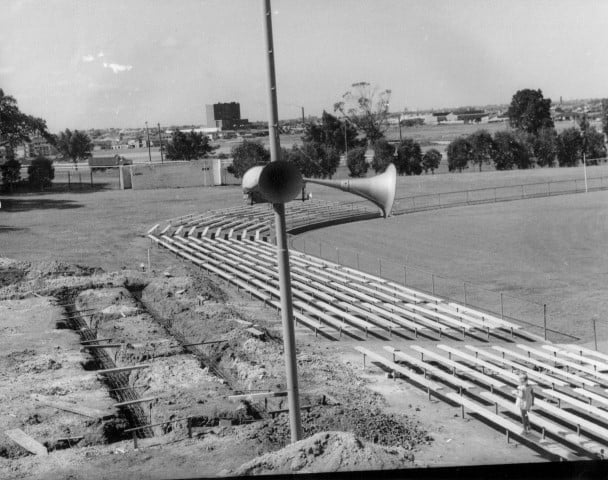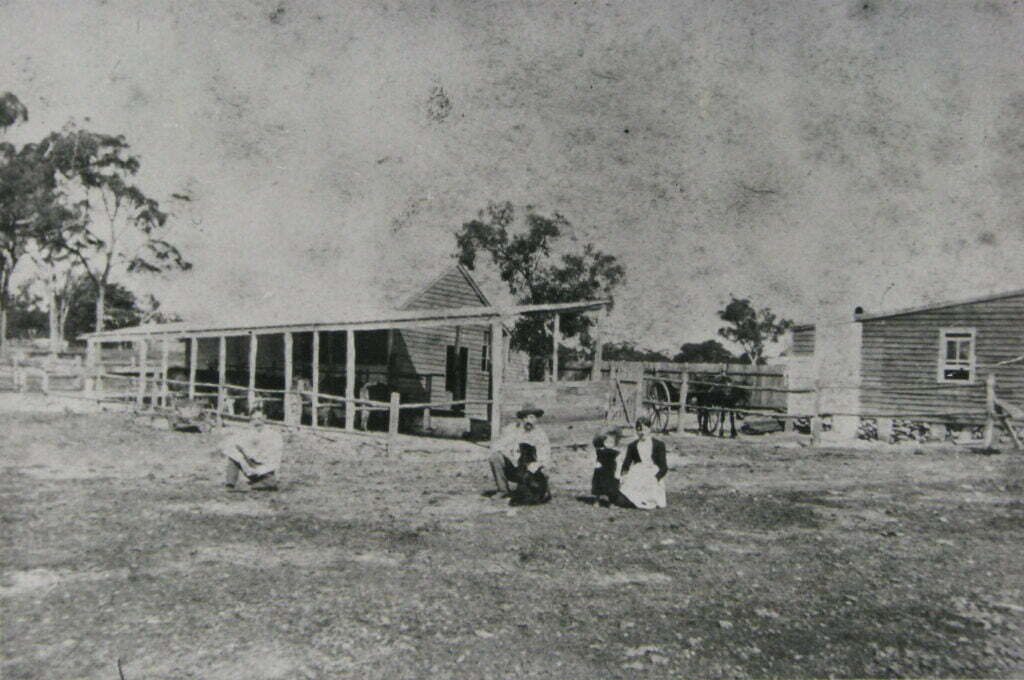Ever wondered why Canada Bay is named after this progressive North American country? Read on to find out more about our local history and interesting relics from your neighbourhood.
Why is Canada Bay, Canada Bay?
Following civil war in British-controlled Lower Canada (now Quebec Province) in 1840, French Canadian exiles were sent to Australia and imprisoned in trenches on a site in Sydney, known as Longbottom Stockade. The convicts broke stone for the construction of Parramatta Road and collected oyster shells for making lime. Exile Bay, France Bay and Canada Bay were duly named in recognition of these French Canadians occupying our shores. Concord Oval now resides on the land where Longbottom Stockade originally housed those people banished from Canadian shores. So, there you have it… Canada Bay!

This 1984 image shows the foundation of trenches from Longbottom Stockade being uncovered during construction of a new grandstand at Concord Oval.
Credit: Canada Bay Connections
Farms for miles
Before the City of Canada Bay was the bustling inner-city suburb it is today, the area was largely rural, with the district around Five Dock and Drummoyne occupied by family-run dairies. Cows roamed the paddocks from the 1890s through to the 1940s, until urban growth meant they became problematic, straying into built-up areas and being impounded, and ultimately the milk, err, dried up.

This weatherboard dairy in Renwick Street, Drummoyne is circa 1900.
Credit: Canada Bay Connections
Row, row, row your boat
After winning the sculling World Championship in the early 1900s, Aussie George Towns came home from Ontario to face a rowing challenge, thrown down by one Jim Stanbury who wanted the crown. On 22 July 1905, the two men sculled their way down the Parramatta River from Homebush to Abbotsford, with Stanbury winning the £500 prize money and the World Champ title. More than 100,000 people crammed the shoreline at Cabarita and Abbotsford to watch the historic event.

George Towns and Jim Stanbury row it out on the Parramatta River in 1905.
Credit: Canada Bay Connections
Time for school
In 1861, Five Dock Public School opened its doors for the first time to 36 students. The stone building was originally on the grounds of St Albans Anglican Church on Great North Road before moving to West Street, Five Dock. It was here that separate school areas for boys and girls were established in the early 1920s (no longer the way our children play in modern times!), and when the school recognised its official beginnings.

Boys playing in their allocated school grounds at Five Dock Public School circa 1921.
Credit: Canada Bay Connections
Travelling by train
With urban growth thriving in the local area, the grand opening of Concord Railway Station along the northern line was a timely and celebrated event in 1887. After a small name change to Concord West Station in 1909, the railway line encouraged the development of industry through to the wider Rhodes region and, of course, allowed commuters to access work in the city.

Passengers wait for the train at Concord West Station in 1933.
Credit: Canada Bay Connections
Butter by the box
Known for making wooden butter boxes and keeping a significant number of residents in gainful employment, The Co-operative Box Company, affectionately known by the locals as the “Box Factory”, moved its mill from Balmain to Chiswick in 1922. Overlooking the Gladesville Bridge, the box factory continued to boost economic growth of the local economy until the site was redeveloped in the late 1960s.

The box factory bayside, circa 1940.
Credit: Canada Bay Connections



